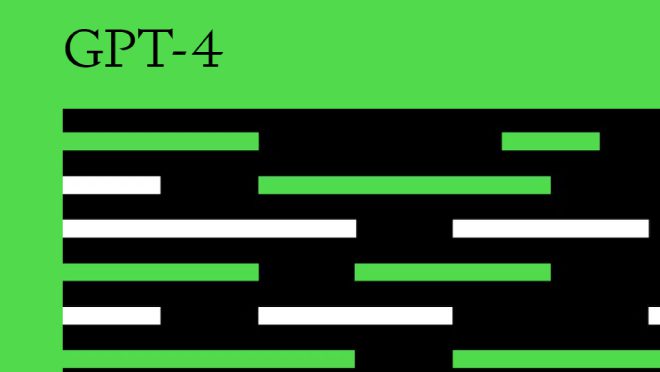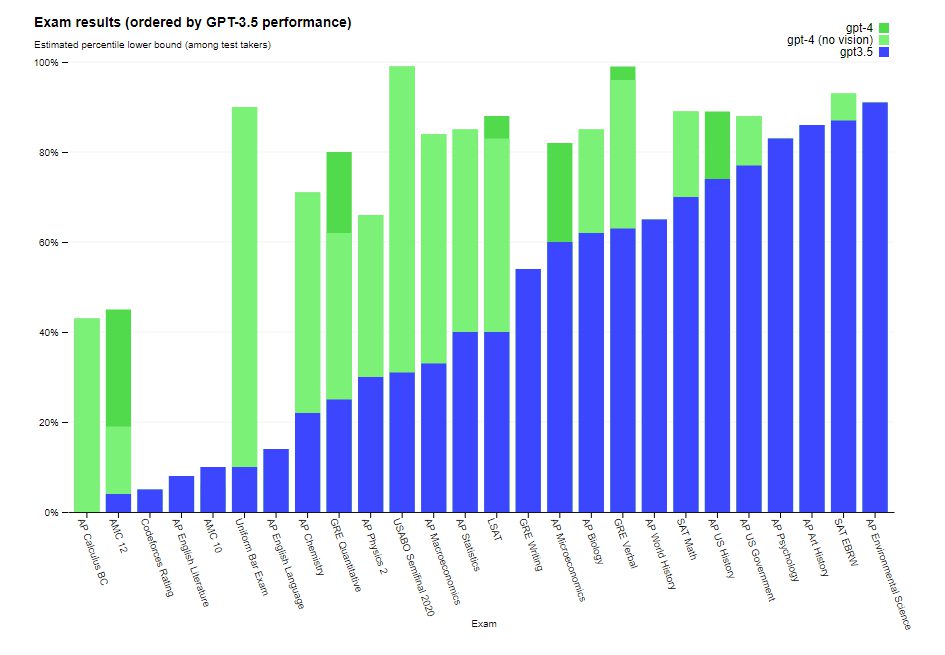Very recently, the world of artificial intelligence, AI is constantly evolved and improved, with breakthroughs and advancements being made almost every day. One of the most exciting developments in recent years has been the creation of language models, which allow computers to understand and generate human language.
And now, with the release of Open AI’s GPT-4, the power and potential of these models are set to be taken to the next level. This new model has generated a lot of excitement and anticipation within the AI community, as it promises to bring significant improvements over its predecessor. So what makes GPT-4 so special? Let’s take a closer look at its features, advancements, potential applications, and downsides.
Table of Contents
What is GPT-4?
GPT-4 is an updated version of the company’s large language model, which is trained on vast amounts of online data to generate complex responses to user prompts. On Tuesday, March 14th OpenAI officially announced the release of the next-generation version of the artificial intelligence technology.

The more potent GPT-4 promises to outperform earlier iterations, potentially altering how we work, play, and create online. It is now on a waitlist and has already appeared in a few third-party applications, such as Microsoft’s brand-new Bing AI-powered search engine.
In a nutshell, GPT-4 is the most recent language model in Open AI’s “Generative Pre-trained Transformer” series. These models are intended to be very adaptable, and they can recognize and produce text in a wide range of languages and styles.
According to Open AI, GPT-4 will only be accessible to ChatGPT Plus customers, who pay $20 per month for VIP access. The chatbot is anticipated to be more widely available in the future, maybe with tiered price choices to meet different user needs.
What Set GPT-4 Apart from its Predecessors?
In comparison to its older brothers, GPT-4 outperforms them on a variety of technical tasks. It performs better on math questions, is deceived into providing false answers less frequently, can score rather well on standardized tests – except English literature examinations, where it is comfortably in the bottom half of the league table, and so on.


It is anticipated that the new model will be substantially bigger and more potent than GPT-3, which was already one of the most sophisticated language models available. GPT-4 is foreseen to be able to comprehend and produce text at a level that was previously thought to be unattainable because of its more than 175 billion parameters.
Also, compared to the previous version, it has a stronger sense of ethics built into the system. ChatGPT took the GPT-3.5 engine as the base and placed filters on top to try to stop it from responding to questions that were harmful or malicious.
GPT-4 Features
One of the key features of GPT-4 is its increased size and complexity. GPT-4 will reportedly have ten times as many parameters as GPT-3, allowing it to process and produce even more intricate and nuanced language. GPT-4 will be able to comprehend and produce language at a level that is significantly more similar to human language than any other AI language model before it thanks to its enhanced complexity.
The capability of GPT-4 to learn from various data modalities, such as text, photos, and videos, is another crucial aspect of the program. As a result, GPT-4 will be able to provide language that is both more accurate and sophisticated and more contextually pertinent to the demands of the user.
This feature has the potential to fundamentally alter how humans communicate with AI language models and pave the way for important developments in chatbots, virtual assistants, and natural language processing.
GPT-4 Advancements
One of the most significant advancements of GPT-4 is its ability to perform unsupervised learning, which means that it can learn from data without being explicitly told what to look for. This represents a huge advance in AI as it enables GPT-4 to identify previously unidentified patterns and relationships in data, enabling the development of more precise and nuanced language.
The ability of GPT-4 to produce language that is more varied and inventive than any other AI language model represents another significant development. This is accomplished by employing a method known as prompt engineering, which entails giving the model particular prompts that urge it to produce language that deviates from its usual patterns. This has the potential to revolutionize the world of creative writing and boost fields like content generation, marketing, and advertising signs.
Potential Applications of GPT-4
The potential applications of GPT-4 are virtually limitless, but some of the most exciting possibilities include:
1. Natural Language Processing (NLP)
NLP is a subfield of AI that focuses on allowing computers to understand and interpret human language. With GPT-4’s sophisticated capabilities, it might be possible to develop NLP models that can comprehend and respond to natural language in a way that is nearly identical to human speech. This might have significant ramifications for sectors like customer service, where chatbots driven by AI might offer a more seamless and organic user experience.
2. Education
By offering explanations, creating the curriculum, and delivering questions with human-like responses, GPT-4 can help students and teachers. The chatbot’s employment in academia has created ethical questions, though, as some students may rely on it to finish tasks without fully comprehending the subject.
3. Machine Translation
GPT-4 has the potential to completely alter the machine translation industry thanks to its multilingual comprehension and text generation capabilities. We could improve global communication and information sharing by using GPT-4 to develop more precise and complex translation models.
4. Customer Support
Customer service is another area with potential use. The GPT-4 could be used to build intelligent chatbots that interact with customers more like real people. Customer satisfaction would increase as a result, and customer service representatives’ workload would go down.
5. Content Creation
The development of content is another area that GPT-4 might find useful. We might increase the efficiency and efficacy of content marketing and other types of digital outreach by using the model to produce high-quality, engaging material in a variety of formats, such as articles, videos, and social media postings.
6. HealthCare
The GPT-4 can analyze medical data and help clinicians make more precise diagnoses in the realm of healthcare. Based on unique patient data, the model might also be utilized to develop individualized treatment programs.
8. Drug Discovery
Lastly, GPT-4 may help in the development of new drugs. We might potentially find novel drug candidates and provide more efficient therapies for a range of diseases and disorders by utilizing the model to examine and understand vast amounts of scientific data and study.
Downsides of GPT-4
Of course, with any new technology comes concerns about its potential downsides. The potential for bias and misrepresentation with language models like GPT-4 is one of the most important problems. These algorithms can unintentionally pick up and reinforce societal biases and stereotypes since they learn from vast volumes of human-generated material.
Furthermore, there is a chance that these models could mistakenly or intentionally be utilized to disseminate inaccurate or misleading information.
The probable loss of jobs is another issue. AI models will eventually be able to carry out activities currently handled by humans as they get more sophisticated. Making sure that the advantages of AI are appropriately distributed and that workers are not left behind is crucial.
Final Thought
As we continue to explore the capabilities of GPT-4 and other language models, it’s important to remember that these technologies are still in their infancy. There will be difficulties and setbacks, as with any new technology. But we can work to make sure that the power of these models is utilized for the greater good with careful planning and cooperation.
All in all, GPT-4 represents a significant advancement in the field of AI and has the potential to completely transform a variety of sectors. The model’s improved capabilities, such as its capacity to comprehend and make sense of various types of data, enable it to carry out more difficult tasks than earlier language models. Yet as we proceed, it’s crucial to approach new technologies with responsibility and caution and to cooperate to address the issues that crop up along the road.




